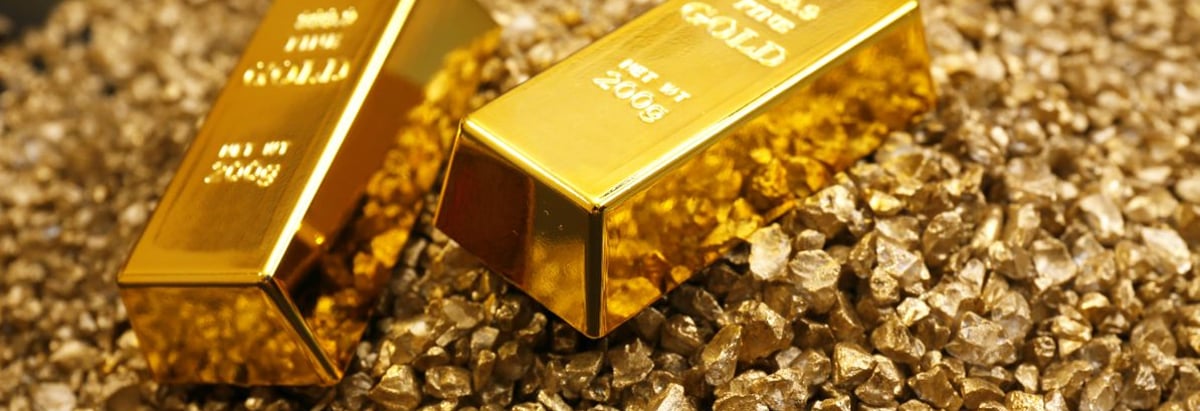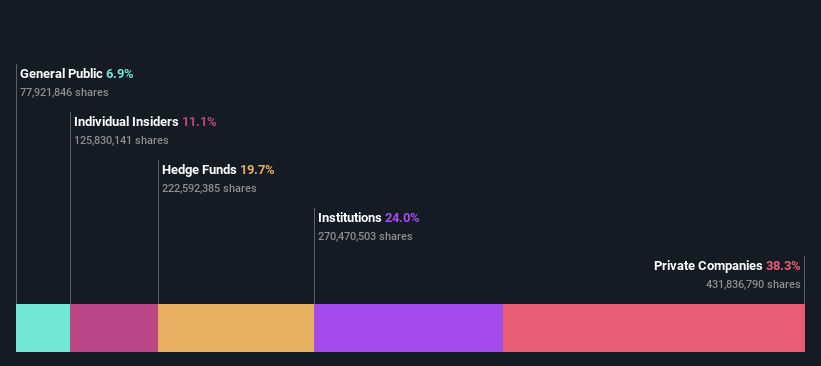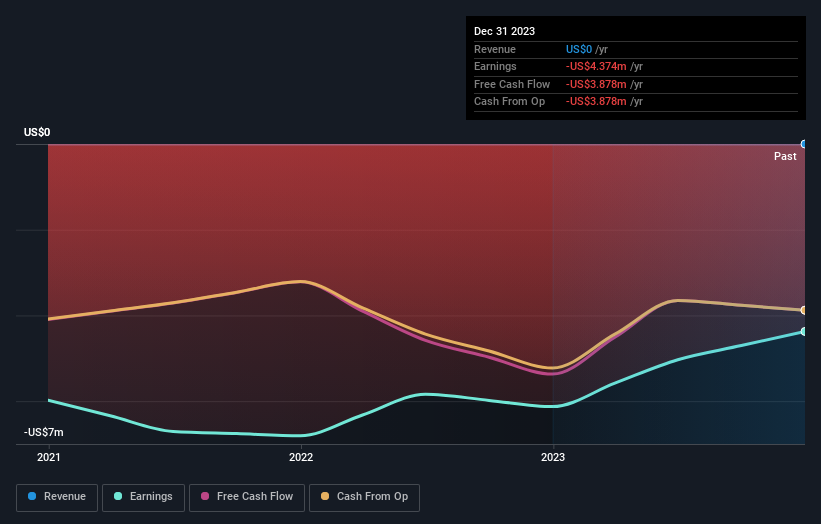- Canada
- /
- Metals and Mining
- /
- TSX:RTG
Both private companies who control a good portion of RTG Mining Inc. (TSE:RTG) along with institutions must be dismayed after last week's 11% decrease

Key Insights
- RTG Mining's significant private companies ownership suggests that the key decisions are influenced by shareholders from the larger public
- A total of 3 investors have a majority stake in the company with 60% ownership
- Recent sales by insiders
A look at the shareholders of RTG Mining Inc. (TSE:RTG) can tell us which group is most powerful. The group holding the most number of shares in the company, around 38% to be precise, is private companies. Put another way, the group faces the maximum upside potential (or downside risk).
While the holdings of private companies took a hit after last week’s 11% price drop, institutions with their 24% holdings also suffered.
In the chart below, we zoom in on the different ownership groups of RTG Mining.
Check out our latest analysis for RTG Mining

What Does The Institutional Ownership Tell Us About RTG Mining?
Many institutions measure their performance against an index that approximates the local market. So they usually pay more attention to companies that are included in major indices.
As you can see, institutional investors have a fair amount of stake in RTG Mining. This implies the analysts working for those institutions have looked at the stock and they like it. But just like anyone else, they could be wrong. When multiple institutions own a stock, there's always a risk that they are in a 'crowded trade'. When such a trade goes wrong, multiple parties may compete to sell stock fast. This risk is higher in a company without a history of growth. You can see RTG Mining's historic earnings and revenue below, but keep in mind there's always more to the story.

It would appear that 20% of RTG Mining shares are controlled by hedge funds. That worth noting, since hedge funds are often quite active investors, who may try to influence management. Many want to see value creation (and a higher share price) in the short term or medium term. Franklin Resources, Inc. is currently the company's largest shareholder with 21% of shares outstanding. For context, the second largest shareholder holds about 20% of the shares outstanding, followed by an ownership of 19% by the third-largest shareholder. In addition, we found that Justine Magee, the CEO has 0.8% of the shares allocated to their name.
After doing some more digging, we found that the top 3 shareholders collectively control more than half of the company's shares, implying that they have considerable power to influence the company's decisions.
While it makes sense to study institutional ownership data for a company, it also makes sense to study analyst sentiments to know which way the wind is blowing. As far as we can tell there isn't analyst coverage of the company, so it is probably flying under the radar.
Insider Ownership Of RTG Mining
The definition of company insiders can be subjective and does vary between jurisdictions. Our data reflects individual insiders, capturing board members at the very least. Company management run the business, but the CEO will answer to the board, even if he or she is a member of it.
Insider ownership is positive when it signals leadership are thinking like the true owners of the company. However, high insider ownership can also give immense power to a small group within the company. This can be negative in some circumstances.
Our most recent data indicates that insiders own a reasonable proportion of RTG Mining Inc.. It has a market capitalization of just CA$45m, and insiders have CA$5.0m worth of shares in their own names. This may suggest that the founders still own a lot of shares. You can click here to see if they have been buying or selling.
General Public Ownership
With 6.9% ownership, the general public, mostly comprising of individual investors, are a relatively smaller ownership class in RTG Mining. We'd generally expect to see a higher level of ownership by the general public, than this. It's not too concerning, but it is worth noting that retail investors might struggle to influence board decisions.
Private Company Ownership
We can see that Private Companies own 38%, of the shares on issue. It might be worth looking deeper into this. If related parties, such as insiders, have an interest in one of these private companies, that should be disclosed in the annual report. Private companies may also have a strategic interest in the company.
Next Steps:
While it is well worth considering the different groups that own a company, there are other factors that are even more important. Case in point: We've spotted 4 warning signs for RTG Mining you should be aware of, and 2 of them are a bit concerning.
If you would prefer check out another company -- one with potentially superior financials -- then do not miss this free list of interesting companies, backed by strong financial data.
NB: Figures in this article are calculated using data from the last twelve months, which refer to the 12-month period ending on the last date of the month the financial statement is dated. This may not be consistent with full year annual report figures.
New: AI Stock Screener & Alerts
Our new AI Stock Screener scans the market every day to uncover opportunities.
• Dividend Powerhouses (3%+ Yield)
• Undervalued Small Caps with Insider Buying
• High growth Tech and AI Companies
Or build your own from over 50 metrics.
Have feedback on this article? Concerned about the content? Get in touch with us directly. Alternatively, email editorial-team@simplywallst.com
Simply Wall St analyst Simply Wall St and Simply Wall St have no position in any of the companies mentioned. This article is general in nature. We provide commentary based on historical data and analyst forecasts only using an unbiased methodology and our articles are not intended to be financial advice. It does not constitute a recommendation to buy or sell any stock and does not take account of your objectives, or your financial situation. We aim to bring you long-term focused analysis driven by fundamental data. Note that our analysis may not factor in the latest price-sensitive company announcements or qualitative material.
About TSX:RTG
RTG Mining
Engages in the exploration and development of mineral properties.
Adequate balance sheet slight.
Similar Companies
Market Insights
Community Narratives




